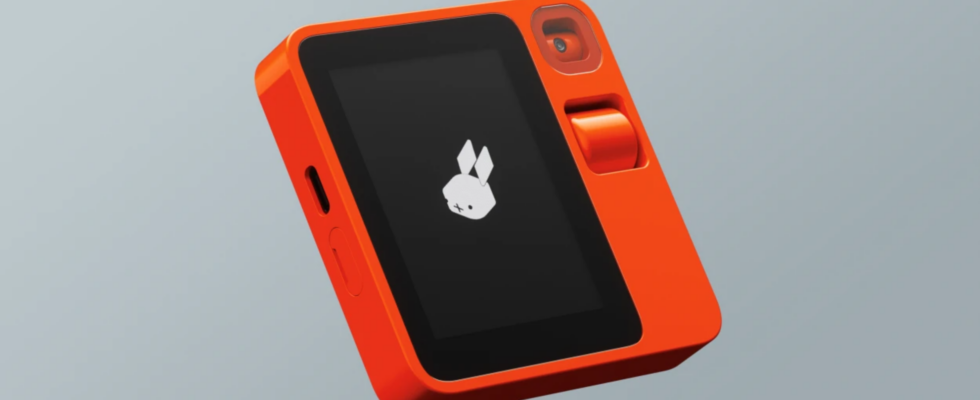The Rabbit r1 is a small object that doesn’t look like much, but which has big ambitions.
We warned you: artificial intelligence will be there again this year. ChatGPT and other major language models have started a trend that is taking the world, and CES 2024, by storm.
However, while this technology festival sees many concepts and products powered by AI, few of them seem truly original. Except, perhaps, for what Rabbit presented to us this Tuesday, January 9.
Your new pocket concierge
Have you ever felt like your voice assistant, such as Google Assistant or Amazon Alexa, is a little too limited? These services, although increasingly functional, are still constrained by the desire of developers to open their services to them. Each voice command must correspond to a specific interaction, and things don’t go much further. Even if AI like ChatGPT promises to improve the interface with the user, the technique risks remaining restricted by the different systems and their APIs.
This is where Rabbit and his r1 come in. This little device, with its 2.88-inch screen and scroll wheel, has more than one trick up its sleeve. Indeed, by being able to invoke a “ great action model “, it can learn to interact with web applications without developers needing to do anything, at least in theory.
Indeed, the company’s AI is capable of navigating and interacting ” visually » with apps designed to be navigated by humans. It is capable of recognizing the different buttons, text fields and other information displayed by the services, then retransmitting them to the user or manipulating them at the latter’s request. In fact, the Rabbit r1 is just a kind of new AI-powered interface for navigating part of the digital ecosystems we already use.
A new way to use our digital services
While the company has already trained its product to operate some popular delivery, VTC, music streaming or messaging services, users can also do so at their convenience. It will therefore be possible for them to show r1 how to use their favorite applications, from note-taking services to image editors.
Once the AI has got its bearings, all you have to do is press the button on the device to ask it, vocally, to perform a particular action. And that’s where the interest of this little orange box lies: in its supposed capacity to simplify and automate human-machine interactions to the extreme. As it stands, the concept looks a lot like an AI-powered Zapier or IFTTT, but also a potential smartphone competitor.

In fact, the Rabbit r1 does not need to connect to another device to work. Equipped with a MediaTek chip clocked at 2.3 GHz, 4 GB of RAM and 128 GB of storage, it can accommodate a SIM card and is even equipped with a camera. All of this is orchestrated by an in-house operating system, Rabbit OS, which provides the interface through which users can interact with the device. To push the comparison with our cell phones even further, its creator specifies that its battery will last a whole day.
A mirage that could become reality
So, are we really witnessing the future of AI-powered mobile telephony? The boundaries of the r1 are still quite unclear, and it remains to be seen how this gadget and its artificial intelligence will behave once in the wild. And, if all goes well, it won’t be long before Rabbit plans to market it from spring 2024 for the modest sum of 200 euros.
For the moment, things seem to be going well, since the company announces that it has reached its first threshold of 10,000 orders and plans to increase the production rate in the coming weeks. It remains to be seen whether it will keep its promises, and especially whether its economic model, whatever it may be, will work. The use of large language (and action) models has a cost that the €200 of r1 will surely not support for very long.
Are we dealing with a start-up that will founder as quickly as it appeared, with a product that is as ambitious as it is useless? After all, the rabbit, the brand’s emblem, refers a little to Alice in Wonderland. We will have to wait a little longer to find out for sure. Especially since it was quite difficult for some journalists on site to get an idea of the product, the weak Wi-Fi connection in the hotel where it was presented made it a bit difficult. Which is not without problems for a device that needs to connect to web services a lot to function.
Rabbit is not, however, the only company to launch an attack on smartphones, AI Pin having exactly the same ambitions. It remains to be seen whether artificial intelligence will be able to sound the death knell for these devices that have colonized our pockets, or whether it will usher them into a new era.

3